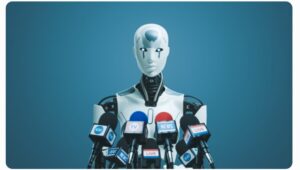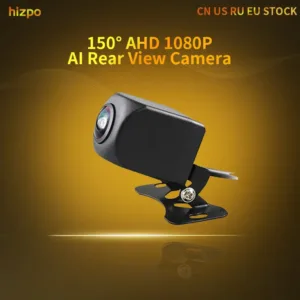Top 10 AI Fashion Tools for Fashion Designers
As someone passionate about fashion and technology, I’ve seen how these AI-powered tools can help streamline everything from design processes to customer experiences.
In this post, I’ll introduce you to some of the top AI fashion tools that are reshaping the industry and making fashion more accessible, personalised, and efficient.
CLO 3D – AI fashion tools
– Website: https://www.clo3d.com
– Use Case: 3D Fashion Design
– Purpose: CLO 3D allows fashion designers to create, simulate, and visualize garments in a 3D environment.
– Description: This tool enables users to visualize fabric draping and garment fitting in real-time, helping to reduce physical prototyping and speed up the design process.
– Features:
– Realistic 3D garment simulation
– Customizable fabric properties and textures
– Virtual fittings and sizing adjustments
– Integration with Adobe Illustrator
– Pros:
– Reduces costs related to physical prototypes
– High-quality, realistic garment renderings
– Supports virtual collaboration
– Cons:
– Steep learning curve for beginners
– High system requirements for smooth operation
– Pricing: Starts at $50 per month (subscription model); free trial available.
TUKAcad – AI fashion tools
– Website: https://tukatech.com/tukacad
– Use Case: CAD for Apparel Design
– Purpose: A leading CAD tool for apparel design that offers AI-enhanced pattern-making, grading, and 3D visualizations.
– Description: TUKAcad allows designers to automate pattern drafting and visualize designs in 3D, offering an efficient workflow for production.
– Features:
– Pattern-making automation
– 3D virtual garment simulation
– Grading (sizing) automation
– Pros:
– Reduces time spent on manual pattern-making
– Seamless integration with production tools
– Great for manufacturers and small-scale designers alike
– Cons:
– Advanced features can be complex for new users
– Pricing: Contact for a custom quote; free demo available.
VibeIQ (by Heuritech)
– Website: https://www.heuritech.com
– Use Case: AI Trend Forecasting
– Purpose: VibeIQ helps fashion designers stay on top of emerging trends by analyzing social media data and predicting future style movements.
– Description: Powered by AI, VibeIQ offers actionable insights by analyzing millions of social media images to forecast fashion trends months in advance.
– Features:
– AI-driven trend forecasting
– Predictive analytics for product development
– Real-time social media analysis
– Pros:
– Helps brands stay ahead of trends
– Provides detailed, data-backed trend reports
– Cons:
– Pricing is not transparent; typically more expensive for small brands
– Pricing: Custom pricing based on business size and needs; demo available.
Designovel – AI fashion tools
– Website: https://www.designovel.com
– Use Case: AI-Generated Fashion Design
– Purpose: Designovel uses AI to assist designers in generating fresh ideas, sketches, and patterns based on current trends and previous designs.
– Description: With AI-powered design generation, Designovel helps designers brainstorm new ideas and automate certain elements of the design process.
– Features:
– AI-generated fashion sketches
– Customizable design elements (fabric, patterns, etc.)
– Style combination recommendations
– Pros:
– Helps reduce creative block
– Automates early-stage design processes
– Cons:
– Limited to predefined design templates
– Pricing: Freemium plan available, premium starts at $30 per month.
Stylumia
– Website: https://stylumia.ai
– Use Case: Fashion Forecasting & Retail Analytics
– Purpose: Stylumia provides fashion designers with AI-driven insights into consumer preferences, helping brands predict demand and develop successful products.
– Description: The platform helps reduce overproduction by predicting which designs will be successful based on consumer data and market trends.
– Features:
– AI-driven demand forecasting
– Market trend insights
– Regional and demographic preference analysis
– Pros:
– Helps reduce product overstock and waste
– Provides highly detailed reports
– Cons:
– Limited features for small businesses or individual designers
– Pricing: Custom pricing; demo available on request.
ZMO.AI – AI fashion tools
– Website: https://www.zmo.ai
– Use Case: AI Virtual Models
– Purpose: ZMO.AI offers AI-generated virtual models that allow designers to showcase garments on customizable digital avatars, saving time and reducing photoshoot costs.
– Description: With diverse virtual models, fashion designers can create dynamic lookbooks and digital fashion shows without physical resources.
– Features:
– Customizable virtual models
– AI-generated photoshoots
– Support for different body types, skin tones, and poses
– Pros:
– Reduces the need for traditional photoshoots
– High-quality, diverse model visualizations
– Cons:
– Limited customization for model features compared to traditional methods
– Pricing: Free trial available; contact for pricing.
Fashwell
– Website: https://fashwell.com
– Use Case: Visual Search & Image Recognition
– Purpose: Fashwell uses AI to enable image recognition and visual search capabilities, allowing consumers to search for fashion items using photos.
– Description: This tool is ideal for fashion retailers who want to enhance their e-commerce platform by letting customers search for products using images instead of text.
– Features:
– AI-powered image recognition
– Product tagging and cataloging
– Seamless integration with e-commerce platforms
– Pros:
– Improves customer experience on e-commerce sites
– Increases product discoverability
– Cons:
– Requires high-quality images for best results
– Pricing: Contact for pricing; free demo available.
Adobe Sensei
– Website: https://www.adobe.com/sensei.html
– Use Case: AI-Enhanced Design Tools
– Purpose: Adobe Sensei uses AI to automate and enhance various design tasks across Adobe’s suite of tools, improving the workflow for fashion designers.
– Description: Sensei automates repetitive tasks such as image retouching, pattern replication, and color adjustments, allowing designers to focus more on creativity.
– Features:
– AI-assisted image editing
– Pattern and layout automation
– Insight generation for creative inspiration
– Pros:
– Integrates seamlessly with Adobe Creative Cloud tools
– Speeds up design workflows
– Cons:
– Requires an Adobe subscription for access
-Pricing: Part of Adobe Creative Cloud, starting at $52.99 per month; free trial available.
Makemode
– Website: https://www.makemode.ai
– Use Case: AI-Assisted Fashion Design & 3D Modeling
– Purpose: Makemode assists designers in generating quick fashion sketches and 3D models, using AI to speed up prototyping and ideation.
– Description: This platform helps fashion designers create 3D garments and virtual prototypes, offering tools for rapid concept generation.
– Features:
– AI-assisted design creation
– 3D visualization of garments
– Virtual collaboration tools
– Pros:
– Speeds up the design process
– Supports team collaboration
– Cons:
– Limited to early-stage design processes
– Pricing: Starts at $25 per month; free plan available.
Revery AI
– Website: https://www.revery.ai
– Use Case: Virtual Try-On
– Purpose: Revery AI offers real-time virtual try-on technology for fashion e-commerce, allowing customers to see how clothes will look on them digitally.
– Description: Fashion designers and retailers can leverage this technology to offer consumers a personalized shopping experience, which reduces returns and improves satisfaction.
– Features:
– Real-time virtual try-on
– AI-driven fit prediction
– Support for diverse body types and styles
– Pros:
– Enhances customer engagement
– Reduces return rates for online sales
– Cons:
-Accuracy of try-on may vary depending on the clothing type
-Pricing: Contact for pricing; free demo available.
Conclusion
AI is quickly becoming an indispensable part of the fashion world, offering solutions that are not only cutting-edge but also practical.
Whether you’re a designer looking for inspiration, a retailer seeking to enhance customer engagement, or simply a fashion enthusiast, these AI tools can help you stay ahead of trends and improve your overall experience.
The fusion of fashion and AI is just the beginning of a new era, and by embracing these technologies, we can expect a future where creativity and innovation thrive side by side.




















